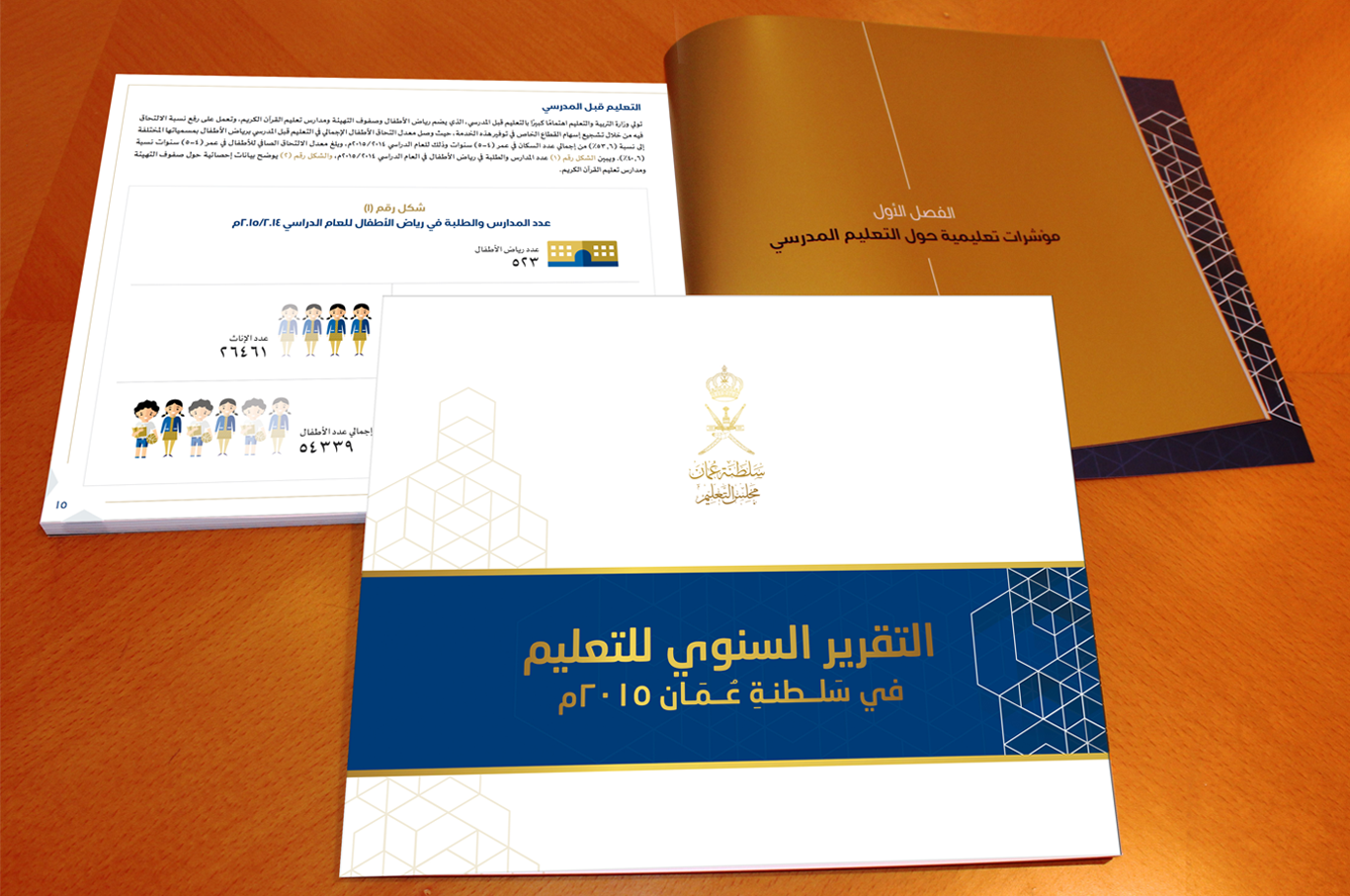
The Education Council recently issued its annual report on education in the Sultanate of Oman 2015. It is intended that this report is to be an official reference for educational policies and decision makers to draw future plans and make sound decisions, in accordance with educational indicators and clear data. The report presents the most remarkable projects and programs implemented in the education sector during 2015. It also provides many statistical educational indicators.
This 2015 annual report is published in continuation of the efforts of the Education Council which are associated to the follow-up process of educational affairs and achieved projects and programs. The issuing of this report coincides with the end of the eighth five-year plan and the start of the ninth five-year plan which shall witness implementation of many more projects and programs. These projects and programs were already approved by the Education Council, the ministries and executive authorities concerned with education. They correspond with future trends of development in the Sultanate of Oman and best international practices. They shall contribute to the development and improvement of the educational process and assure its quality to produce highly efficient human resources who are proud of their national identity and who are able to become pioneers in their fields of specilizations inside Oman and, at the same time, compete at international arenas.
The contents of the report:
The report addresses many topics. These are: pre-school education, school education and higher education with its academic , technological, applied and health education paths. It also covers research on education and education quality assurance.
These topics are discussed in four sections. They are:
It consists of three chapters. Chapter one discusses educational indicators of school education. It presents statistical indicators of pre-school education such as numbers of students , kindergartens and children preparation classes. It also presents statistical indicators of public school education including numbers of students, rates of students' enrollment, dropouts and repetition. This chapters presents indicators of average numbers of students in classrooms as well as other relevant indicators. It also shows statistical indicators of private education including increment in numbers of private schools and students enrolled in these schools. Statistical indicators of human resources such as numbers of teachers and administrators, Omanization rates and professional developments programs are also included in this chapter.
The second chapter presents educational indicators on higher education. These include statistical indicators of enrolled students and graduates as well as programs and specializations offered at Sultan Qaboos University, Colleges of Applied Sciences, Colleges of Technology, private universities and colleges and health institutes.
The third chapter includes some statistical indicators on vocational education and training. These indicators covers enrolled students, numbers of trainees at vocational training centers and the Fishermen Training Institute.
This section addresses the projects and programs which were implemented in 2015. It consists of three chapters. Chapter one covers the most remarkable school education projects and programs implemented by the Ministry of Education such as the school education law, the educational indicators system, curricula standards and teacher standards. The second chapter presents the most remarkable higher education projects and programs. It highlights the projects and programs of Sultan Qaboos University including the international academic accreditation of many academic programs as well as the national project of relevance of higher education institutions outcomes with the needs and requirements of the Omani labor market. This chapter covers also the most remarkable projects implemented by the Ministry of Higher Education such as performance indicators, graduates survey in 2015, the strategic plan of colleges of applied sciences and the electronic network of the Ministry of Higher Education (ASAS).
The second chapter also addresses the projects of colleges of technology such as the project of development of programs and specializations of colleges of technology and implementation of electronic education in these colleges. The chapter is concluded with the most remarkable projects and programs implemented by health institutes such as the review of the general diploma program and the specialized diploma program.
The third chapter of this section presents the most important projects and programs of the vocational education and training. These projects include the development of educational paths of vocational education diploma and the project of upgrading quality of vocational education and training.
This section is concerned with quality assurance of higher education. It emphasizes the most remarkable projects and programs of Oman Academic Accreditation Authority in 2015. Among these are: Evaluation against institutional standards and the project of the Oman Qualifications Framework as well as other projects and programs which aim at raising standards of higher education and improving the quality of its programs.
This section presents the outcomes of educational researches and its results with regard to educational institutions. It includes two chapters. Chapter one covers research in the field of school education. The second chapter is concerned with research in higher education institutions. It addresses researches conducted at Sultan Qaboos University, colleges of applied sciences, private universities and colleges, colleges of technology and health institutes.
The Education Council shall follow up the implementation and evaluation of these projects to assure quality and to be sure that they achieve their targeted objectives.
The issuing of this report, which covers different types and levels of education, shall help in identifying aspects of improvement in the educational system and other aspects which need further studying, reviewing and evaluation.
Please visit the website: www.educouncil.gov.om of the Education Council to read the report.
It worth mentioning that the Education Council has issued last year a comprehensive report on education in the Sultanate of Oman. That reports highlights the most important achievements in the education sector during the eighth five-year plan (2011 – 2015). It also shows expected achievements during the current five-year plan based on development projects and programs which were already planned in this respect.